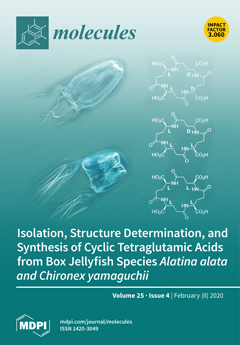For large-scale bioproduction, thermal stability is a crucial property for most industrial enzymes. A new method to improve both the thermal stability and activity of enzymes is of great significance. In this work, the novel chaperones
RrGroEL and
RrGroES from
Rhodococcus ruber, a nontypical actinomycete with high organic solvent tolerance, were evaluated and applied for thermal stability and activity enhancement of a model enzyme, nitrilase. Two expression strategies, namely, fusion expression and co-expression, were compared in two different hosts,
E. coli and
R. ruber. In the
E. coli host, fusion expression of nitrilase with either
RrGroES or
RrGroEL significantly enhanced nitrilase thermal stability (4.8-fold and 10.6-fold, respectively) but at the expense of enzyme activity (32–47% reduction). The co-expression strategy was applied in
R. ruber via either a plasmid-only or genome-plus-plasmid method. Through integration of the nitrilase gene into the
R. ruber genome at the site of nitrile hydratase (NHase) gene via CRISPR/Cas9 technology and overexpression of
RrGroES or
RrGroEL with a plasmid, the engineered strains
R. ruber TH3 dNHase::
RrNit (pNV18.1-P
ami-
RrNit-P
ami-
RrGroES) and TH3 dNHase::
RrNit (pNV18.1-P
ami-
RrNit-P
ami-
RrGroEL) were constructed and showed remarkably enhanced nitrilase activity and thermal stability. In particular, the
RrGroEL and nitrilase co-expressing mutant showed the best performance, with nitrilase activity and thermal stability 1.3- and 8.4-fold greater than that of the control TH3 (pNV18.1-P
ami-
RrNit), respectively. These findings are of great value for production of diverse chemicals using free bacterial cells as biocatalysts.
Full article






